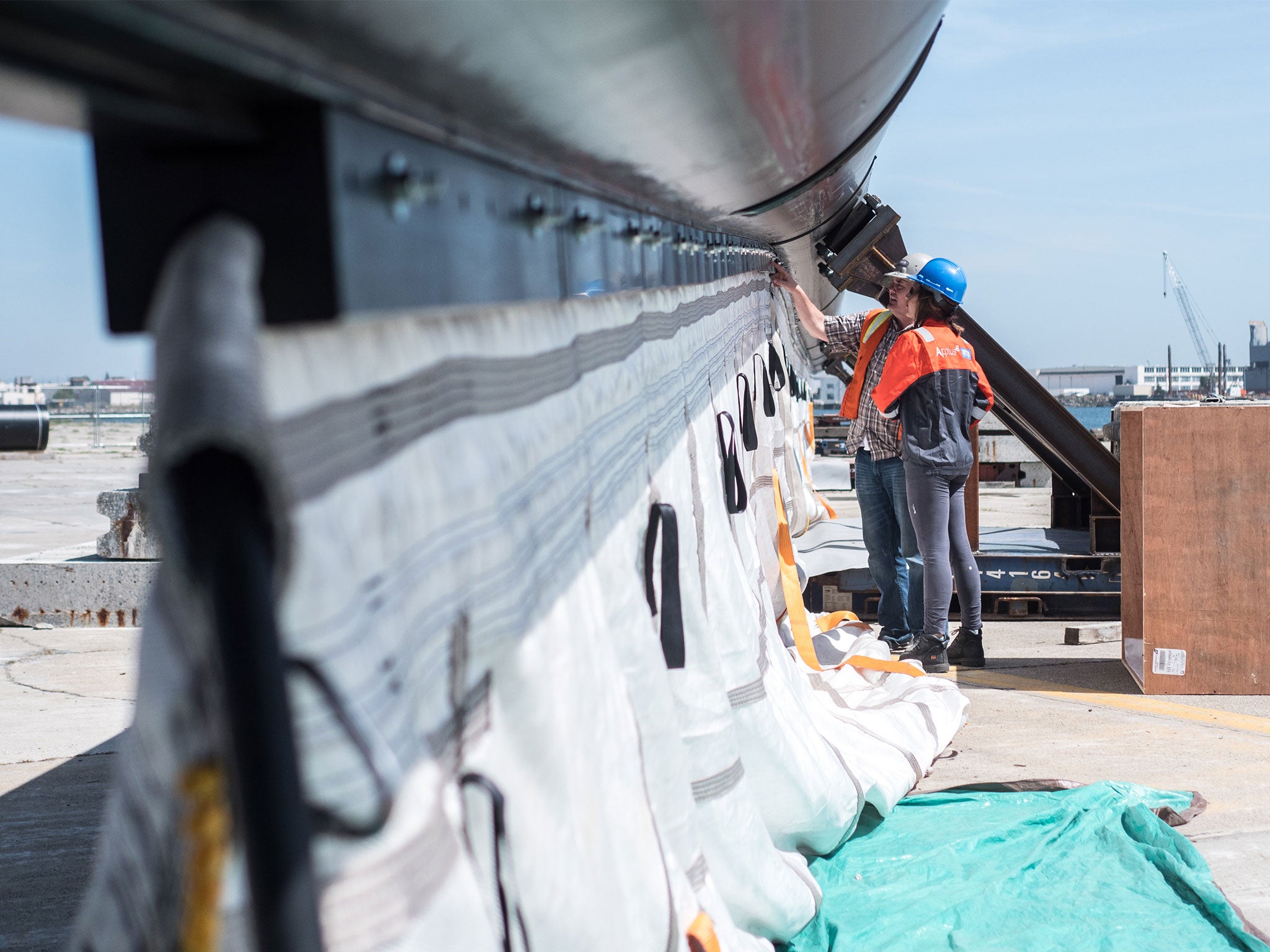Ocean Cleanup: Device launched to remove thousands of tons of plastic from Great Pacific Garbage Patch
Project plans to halve debris field the size of France within five years

Your support helps us to tell the story
From reproductive rights to climate change to Big Tech, The Independent is on the ground when the story is developing. Whether it's investigating the financials of Elon Musk's pro-Trump PAC or producing our latest documentary, 'The A Word', which shines a light on the American women fighting for reproductive rights, we know how important it is to parse out the facts from the messaging.
At such a critical moment in US history, we need reporters on the ground. Your donation allows us to keep sending journalists to speak to both sides of the story.
The Independent is trusted by Americans across the entire political spectrum. And unlike many other quality news outlets, we choose not to lock Americans out of our reporting and analysis with paywalls. We believe quality journalism should be available to everyone, paid for by those who can afford it.
Your support makes all the difference.Scientists are set to launch a device they hope will clean up the 80,000 tons of plastic floating in an area of the Pacific Ocean.
System 001, developed by non-profit organisation Ocean Cleanup, will begin its journey to the Great Pacific Garbage Patch from San Francisco on Saturday after years in development.
The 600 metre long machine uses tidal patterns to float into areas of high plastic concentration, creating a horseshoe-shaped barrier to trap debris which can later be collected and recycled.
If successful, Ocean Cleanup, the brainchild of Dutch inventor Boyan Slat, wants to launch a fleet of similar systems to remove around half of plastic trapped in the vortex over the next five years.
Located roughly halfway between Hawaii and the coast of California, the Great Pacific Garbage Patch is the largest accumulation of ocean plastics in the world.
The trap, formed by circulating currents, is thought to contain 1.8 trillion pieces of plastic and now covers an area the size of France.
“Certainly engineering something to survive in the ocean has been a pretty big challenge,” Mr Slat told San Francisco-based ABC7 News.
“If you look at the coastline, that’s actually a very effective way of collecting plastic, so that’s why we said, ‘Why don’t we build our own coastline?’”
System 001 reportedly cost around $25m (£19.4m) to develop and construct.
Ocean Cleanup plans to offer large companies the opportunity to fund the building of additional systems in return for having their corporate branding placed on the devices.
Many ocean experts have expressed optimism the project may go a long way to cleaning up the massive debris field, but some lingering concerns still remain.

Developers insist marine life will not get caught by the barrier and will be able to slip under the three metre deep skirt it uses to collect plastic.
However, Sue Kinsey, of the Marine Conservation Society, warned creatures that float on the water’s surface, such as jellyfish, would be unable to escape.
“The major problem is those creatures that passively float in the ocean that can’t actually move out of the way – once they’re in this array, they’re going to be trapped there unable to move,” she told the BBC.
The system will be towed around 2350 nautical miles offshore, where it will undergo two weeks of testing in open water.
It should then continue its journey another 1,000 nautical miles into the middle of the ocean, where it will begin operations.
Scientists expect to get a clearer picture of how successful they can expect the project to be by the end of the year.
Join our commenting forum
Join thought-provoking conversations, follow other Independent readers and see their replies
Comments